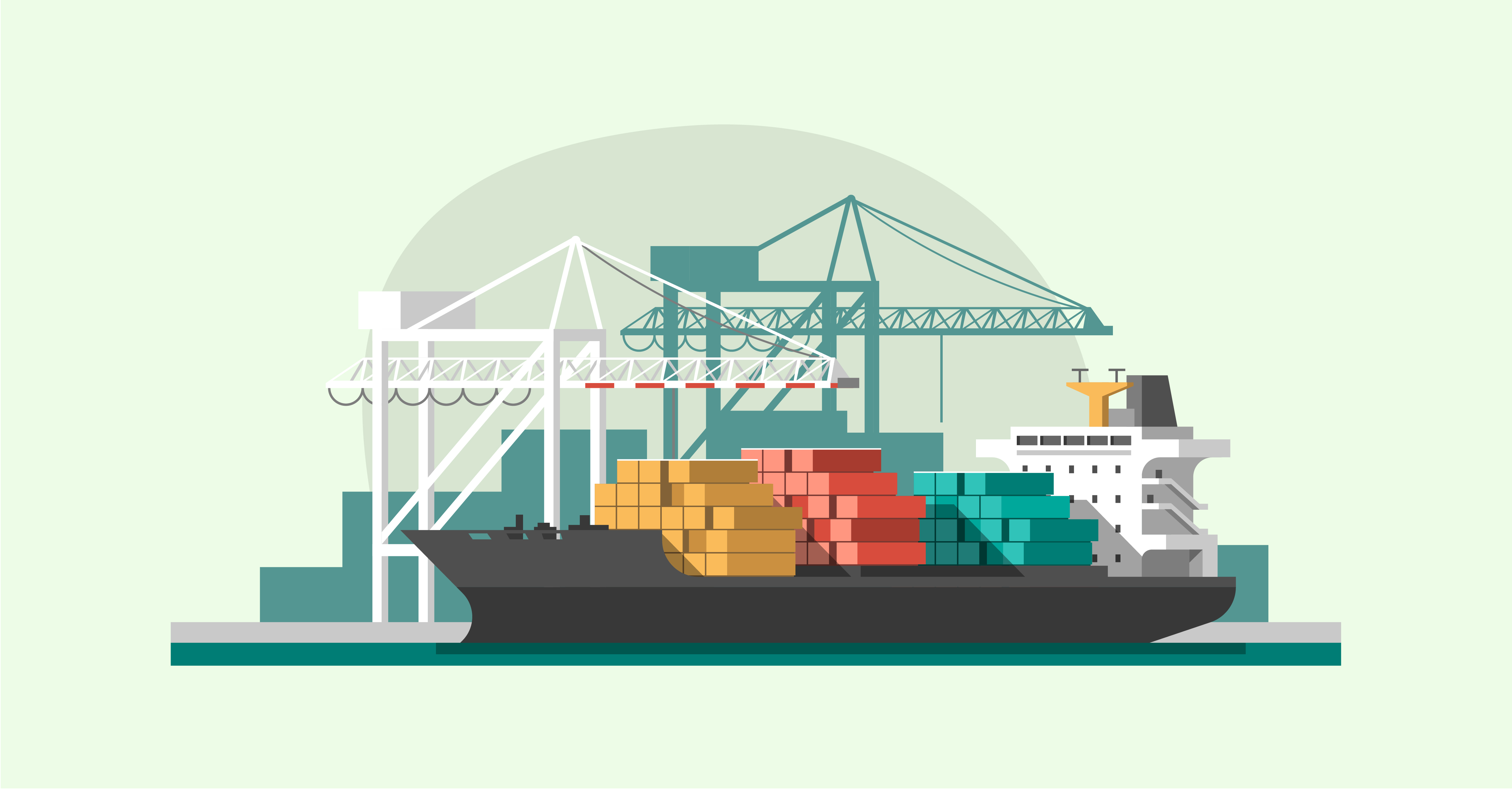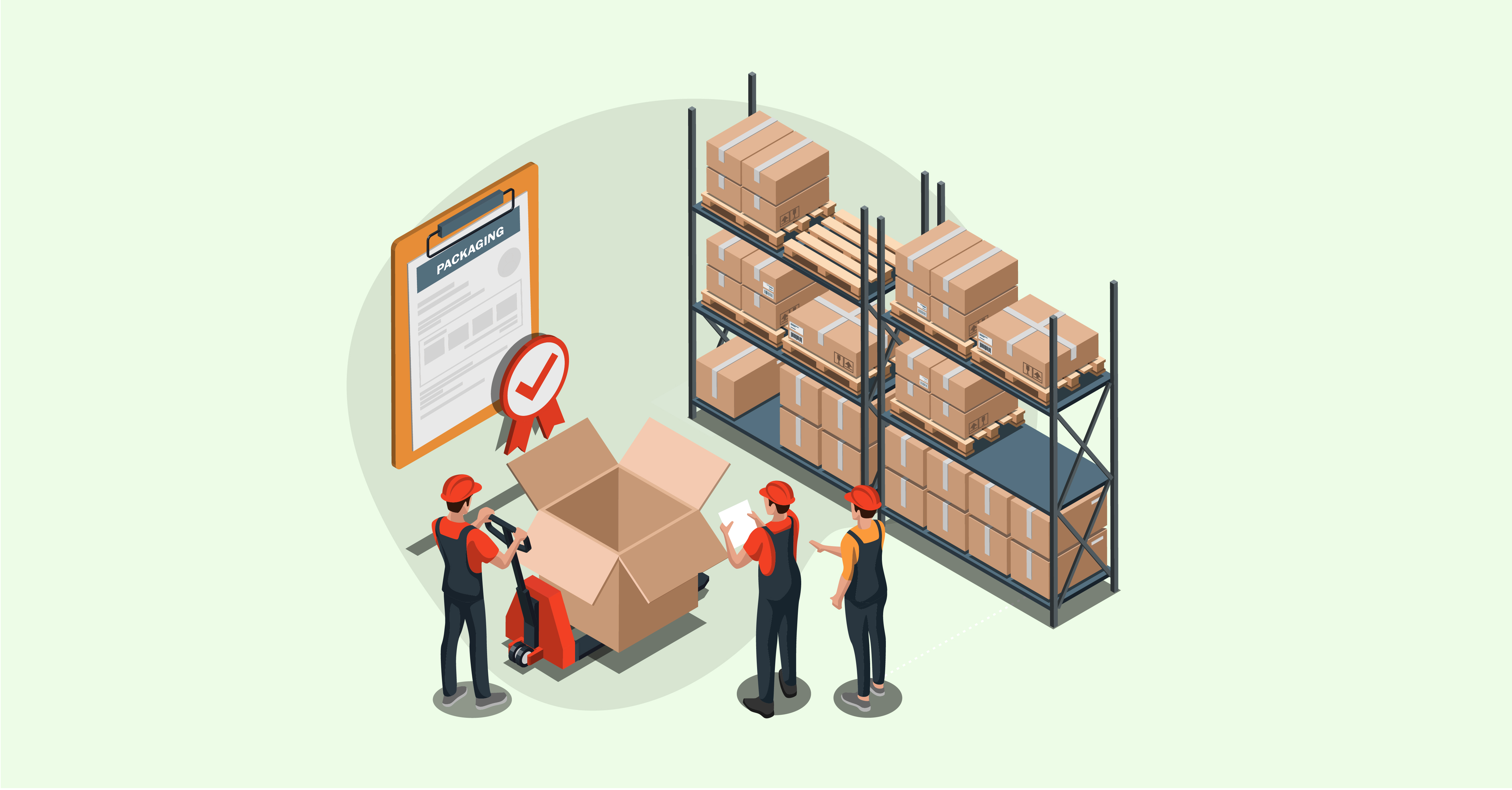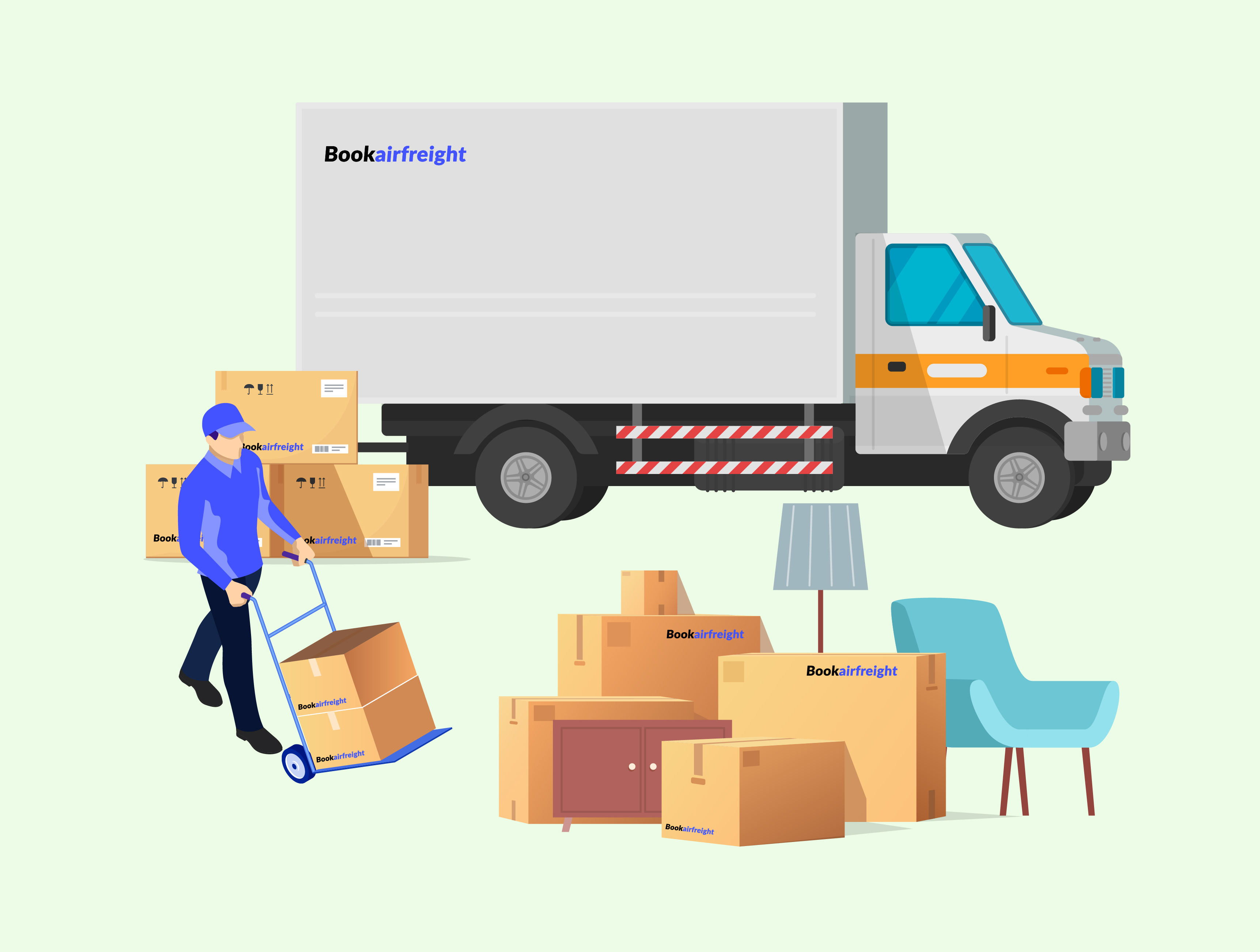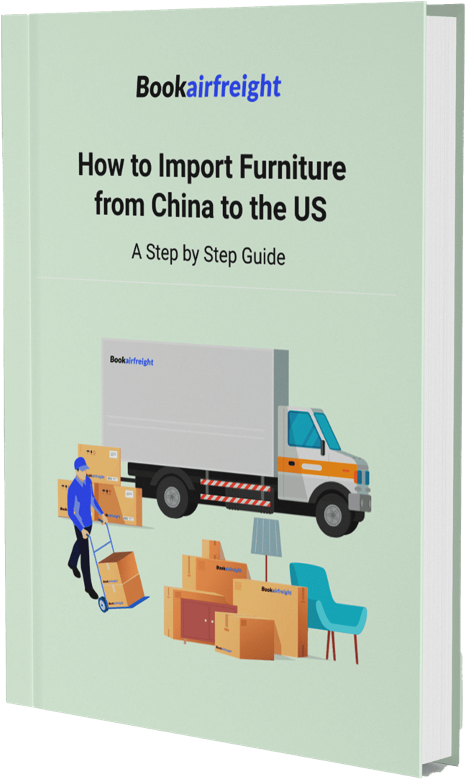According to reports from the US Department of Commerce’s International Trade Administration, global furniture imports to the United States reached $67.1 billion in 2018 and hit an all-time high of $283.3 billion in June of 2021.

Export Regulations
Every country has its own set of rules and regulations regarding exporting furniture. The standard information required for several countries includes export licenses, tariff and tax documentation, product invoices, and mode of transportation.
It’s essential to know the export regulations for your country and do your research beforehand to ensure all steps are taken appropriately.
Below is a list of major countries that frequently export furniture to the USA and their requirements.
China
China’s Ministry of Commerce (MOFCOM) has identified goods in three categories to determine what type of export license is required for each product: permitted goods, restricted goods, and prohibited goods.
Permitted goods are already licensed and can freely be exported abroad. Restricted goods can be exported but require licensed approval or annual quotas to control and regulate. The exportation of prohibited products is indisputably banned.
An export license is required for all foreign trade companies (FTC) before exporting any product. This license or permit is issued by the MOFCOM that gathers information about the exporter, the buyer, the cargo, the value, and the mode of transportation of the products.
Additionally, a Harmonized System code or HS code must be obtained for any product awaiting export. An HS code is a specific number applied to the product for tracking and classification purposes. These codes determine what rules and regulations apply to the product being exported.
India
To export products in India, one must comply with the Foreign Exchange Management Act of 1999 (FEMA). Export transactions are governed by the Director-General of Foreign Trade (DGFT) and the Foreign Trade Policy (FTP).
These institutions work together to manage export transactions within India and regulate the export of goods and services abroad. Additionally, an export declaration must be submitted before exporting any goods from India. A declaration of goods applies to any type of product, including textiles, materials, and software.
Export of Goods and Services are declared on an Export Declaration Form (EDF) and must be submitted to the Commissioner of Customs department for the product to be approved for export. Once the EDF is completed, this form plus its accompanying documents are sent to the Authorized Dealer of goods and services. These documents would include
Italy
Italian companies are required to obtain a license for any good they desire to ship abroad. A declaration must be submitted with information about the products being exported, including
This is generally required any time a company or individual is seeking to export goods to another country. Additionally, European countries must obtain an EORI number.
EORI is the Economic Operator Registration and Identification number used for clear verification of economic operators within import and export activities throughout Europe. This unique number must be obtained before any import or export procedures.
Mexico
Exports from Mexico require intense documentation and can be a tedious process. Companies or individuals looking to export to the United States must register their products with the Registry of Exporters.
This includes any product that may contain gold, silver, copper, or iron. Working with Mexican customs can be difficult for foreigners, so it’s best to enlist the help of an accountant or attorney in Mexico who is authorized with a Power of Administration over the company. This ensures that the correct documentation is completed and signed.
Customs agencies in Mexico are extremely strict. If any documentation is missing or completed incorrectly, the export process comes to a halt. The list of required export documentation includes
Some sectors may require secondary authorization with certain export materials, such as textiles, firearms, radioactive materials, and chemicals.

Import Documents
To import products to the United States, one must provide the required import documentation. Six crucial documents are needed for the import process, and none can be misfiled or omitted.
1. Commercial invoice
A commercial invoice provides information for the Customs and Border Protection (CBP) Officers to determine if the products being imported are acceptable. This invoice is required for foreign trade, and its main purpose is for the calculation of tariffs.
A commercial invoice is regulated by the Food and Drug Administration (FDA) and contains detailed information including
The invoice should be filled out in English, which is required by U.S. Customs. A commercial invoice is important for any FDA-regulated product to receive Customs clearance at the U.S. point of entry.
2. Packing List
The packing list is provided by the shipper or freight forwarder. Packing lists should include documentation from your commercial invoice and can be checked by the Customs Border Protection (CBP) to authenticate the cargo. Both the packing list and the invoice go together to confirm the required information of the CBP clearance process.
For the import of furniture to the United States, the dimensions of each piece, the item’s net weight, and its gross weight must be calculated and listed on the packing slip.
3. Bill of Lading
In simple terms, the Bill of Lading (BOL) is one big receipt. This commercial document is issued by a carrier and sent to the shipper of the goods, essentially transferring the title of goods. It is signed by the owner of the vessel, captain, or agent who then provides written documentation or proof that the products have been received.
The declaration is to deliver the merchandise at the designated port of entry, along with the condition in which the desired transportation is made.
The documents are then sent off to the authorized holder of the BOL. The BOL is an essential piece of documentation that ensures the exporters receive their money and importers receive their products.
4. Arrival of Notice
The arrival notice is a written communication that is sent by the carrier or agent to let the recipient know that the shipment of products has arrived. Generally, the arrival notice includes
Using an arrival notice to alert the carrier of the product’s delivery can facilitate a quicker unloading process. This allows the product’s recipient to claim and take possession of the items as soon as they are cleared by customs.
Additionally, working directly with a customs agent can ensure you know exactly when the products will arrive, and if there are any delays in shipment or missing documentation.
5. Customs Bond
A Customs Bond involves a written agreement between three parties: the Importer of the Record, the U.S. Customs and Border Protection (CBP), and the bond company issuer.
Before a bond is purchased, imported goods will be held at Customs until proof of bond is shown. Goods will remain pending approval until the bond is verified.
There are a few situations that require the need for a customs bond, including
The cost of a customs bond is calculated based on the amount of taxes and fees that are applied to the imported products. Typically, the bond amount is a minimum of 10 percent of the total duties and fees paid to the CBP.
6. CBP Declaration Form (5106)
The CBP Form 5106, also known as the Importer Identity Form or Declaration Form, must be submitted to CBP before importing commercial goods into the U.S. This is to ensure importers have an account with customs that allows them the ability to import goods.
A 5106 Form is essential for verifying the identity of the importer including current name and address, tracking import history, and ensuring that importers are abiding by the U.S. import rules and regulations.
Once the form is submitted, the importer is known as the Importer of Record (IOR). It’s best to consult a licensed customs broker to assist with these forms so they are filled out accurately.
Import Regulations for Furniture
To import wood furniture, wood products, manufactured wood products, tables, beds, or wardrobes into the U.S. you must consider a number of factors.
These include what government parties are involved, what procedures must be followed, and the fundamental aspects of furniture imports.
According to U.S. customs, one must describe:
Although it is possible to import nearly any type of furniture: be it plastic, metal, or glass; wood furniture has its own sets of rules and regulations. These restrictions are implemented by the United States Department of Agriculture (USDA).
The restrictions are designed to prevent invasive species from entering the U.S. to prevent illegal logging. The FDA and USDA require these regulations to be upheld any time wood is imported into the United States.
USDA Wood Import Requirements
According to the USDA, all raw, softwood lumber should be entrusted to a facility with a lawful compliance agreement with Plant Protection and Quarantine once the lumber is imported.
Lumber and wood products are required by the USDA to be heat treated within 30 days of release from the first port of entry arrival. Additionally, the USDA also states that the only softwood logs that are allowed entry into the U.S. are the Monterey Pine and Douglas Fir.
It's important to note that some types of wood like Plywood, will have some additional requirements that need to be complied with.
For furniture items that are painted, the Agency for Toxic Substances and Disease Registry states that the lead paint threshold is 0.06% or above by weight, and is banned from production.
TSCA Declaration for Composite Woods
Composite wood products are made up of particles bound together using adhesives or resins that may contain formaldehyde.
This is known to cause serious, negative health risks. Products containing composite wood materials are required to be manufactured in compliance with Title VI of the Toxic Substances Control Act (TSCA).
TSCA Declarations are required for furniture that is made up of composite wood, such as veneers, particleboard, MDF, and certain plywood.
If the furniture you are importing is made of composite wood, you will need to verify with the seller/manufacturer to ensure that the shipment is tagged appropriately for import.
CITES Endangered Species
Furniture constructed with endangered wood must have a USDA-issued permit or certificate before the acceptance of import to the United States. This is according to the Convention on International Trade in Endangered Species of Wild Fauna and Flora (CITES).
The documents must verify the harvesting of the wood in its original country took place legally, and the furniture must arrive at a U.S. port that is qualified to manage CITES-listed species. Some examples of endangered woods include Rosewood from Brazil, Teak from Burma and Thailand, and African Mahogany.
APHIS Sanitation Requirements
The Animal and Plant Health Inspection Service (APHIS) necessitates inspections of all wooden furniture before entering the United States. According to APHIS regulations, all imported wood furniture must be sanitized by chemical or heat treatment.
Heat treatment involves processing the wood in an energy dryer or kiln, while chemical treatment requires the fumigation of wood with a surface pesticide. This ensures all foreign pests and diseases that can potentially be found in the wood are eliminated.
The Lacey Act
Created in 1900, the Lacey Act is used to protect endangered tropical hardwoods among other endangered species. It is one of the United States’ oldest wildlife protection laws.
Through the Lacey Act, trafficking of endangered species to the United States such as wildlife, fish, plants, and natural resources is highly illegal.
In regards to furniture, the declaration is only enacted for un-upholstered wood chairs or seats. For example, un-upholstered, wooden furniture is bought for the beauty of the wood itself.
Therefore, covering or masking the wood for resale defeats its intended purpose.
The APHIS and CITES work together to regulate the import process of wooden furniture, to ensure the Lacey Act is upheld whenever necessary.
FDA Regulations for Special Purpose Furniture
Special purpose furniture is specifically designed for necessary functions, such as hospital beds, dentist chairs, barbershop chairs, or veterinary tables. These items are regulated by the FDA upon import or manufacture.
While the FDA cannot tell a doctor, dentist, vet, or hairstylist what they can or cannot do with their furniture, these products are regulated due to safety concerns for others who are potentially involved.
The FDA submits approval of these devices once a safety inspection is conducted, no harmful chemicals are detected, and the functionality of the device is in working order.
DOV Vehicle Equipment Declaration
Seats designed for motor vehicles require a Department of Transportation (DOT) Vehicle Equipment Declaration Form. The seat itself, if intended for on-road use, must be authorized to comply with U.S. DOT regulations.
DOT regulations include safety inspections and testing for hazardous chemicals. Additionally, the seat may only be used in the vehicle it was designed for and must be inspected as such.
All motor vehicle equipment that is imported to the United States is subject to Federal Motor Vehicle Safety, Bumper, and Theft Prevention Standards.
Anti-Dumping Duty
Simply put, anti-dumping duty is a tariff that is imposed on goods that are imported and priced below the fair market value of similar goods in the domestic market.
The government imposes the anti-dumping duty on imported goods when they believe that the goods are being ‘dumped’ into the domestic market.
This duty was created to protect local markets from price gouging by the competing foreign imports.
As an importer or exporter, it’s important to know what anti-dumping duties are. Staying up to date with anti-dumping duty trends and related news regarding the product and its country of origin is key to avoiding these unnecessary charges.
Import Fees: How Much Does It Cost to Import Furniture to the US?
The three major fees one will encounter during the import process are tariff taxes, harbor maintenance fees (HMF), and merchandise processing fees (MPF).
It’s important to note how much these fees will cost, how they work together, and which tariff code is specified for the imported items.

HS Codes for Import Tax
As stated above, a Harmonized System code or HS code is a numerical code that keeps track of what items are shipped across the country.
The first six digits of an HS code are used universally. Every other country may then add their own digits to the sequence, creating eight-, ten-, or twelve-digit international codes.
These codes determine the rules and regulations of the product being imported, as well as the appropriate tax for each item. For example, seats and seat parts fall under HS Code 9401. Mattress supports and bedding are HS Code 9404.
Once the items are imported, the HS codes determine the tax rate for the import duty. Rates are determined by the country of export, the merchandise itself, and the current tariff rate. Currently, most furniture intended for household use is not subject to import duties.
Harbor Maintenance Fee
The Harbor Maintenance Fee is a payment collected by the United States Customs and Border Protection (CBP), for all imported shipments to the US that arrive via sea freight.
An HMF fee amounts to 0.125% of the cargo’s value and is used to facilitate the conservation and development of seaports in the United States. There is no fee collected for shipments by air or truck.
This charge applies to shipments entering all US ports defined in the Water Resources Development Act of 1986. There are 197 ports in the United States across 32 states that require a Harbor Maintenance Fee.
HMFs are collected on all formal entries, including to a warehouse, temporary importation through bond entries, and admissions into foreign trade zones. As far as collecting the HMF, fees are typically considered part of the destination process.
Merchandise Processing Fee
A Merchandise Processing Fee (MPF) is an importer fee that the CPB charges in addition to the US Customs Duty. This fee is 0.3464% of the value of the merchandise. The MPF fee has a minimum and maximum amount determined by the assigned value of the shipment.
As of 2021, the minimum MPF fee that can be given to a formal entry is $2.22 USD, and the maximum fee is $538.40, USD. Formal entries are the import of merchandise used for commercial selling purposes, whereas informal entries are merchandise typically used for personal use.

Shipping Via Ocean Freight
There are two types of ocean freight: Full Container Load (FCL) and Less Than Container Load (LCL). These allow you to take up to a full container for larger shipment volumes, or a partial container shared with others for smaller shipment volumes.
Due to weight restrictions, the bigger the shipment, the cheaper ocean freight becomes. However, ocean freight is the slowest transportation method for importing furniture from overseas.
It could take weeks or even months for the cargo ship to reach the US entry point. If you are shipping low to medium volumes of furniture and shipping time is not a factor, ocean freight is the better alternative.

Packaging Options for Shipping Furniture
Importing furniture to the US can be done in multiple ways. There’s flat-pack shipping, assembled, and unassembled. Finding an appropriate shipping method is determined by cost, the number of items needing to be imported, and the size of the item itself.
Flatpack
Flatpacks are delivered in cartons that are packed like flattened boxes. They come with assembly instructions and the necessary tools required for the consumer to assemble on their own.
Flatpack furniture is manufactured in separate parts so assembly can be handled after the purchase. Furniture components can be from one or two pieces, and up to 300 pieces. They are essentially furniture “kits”.
Pros of Flatpack Shipping
Cons of Flatpack Shipping
Assembled
With pre-assembled furniture, the hassle of putting together each item is taken care of. Each furniture piece can be uniquely customized to fit the needs of the importer, with improved quality of materials.
One major setback, however, is the amount of space assembled furniture takes up in a shipping container. This can drastically increase the cost of shipment, and limit the number of items to be imported at a given time.
Unassembled
Unassembled shipping is similar to flatpack shipping, in a sense that in both scenarios, the items come in pieces. However, unassembled shipping is furniture pieces that don’t necessarily start from scratch.
It may be a couch that has three pieces which click together, or a lamp that’s simply missing a lightbulb.
While unassembled shipping is not as costly as assembled furniture, it can take up space greater than that of flat-packed merchandise. Unassembled shipping is the better alternative, however, when it comes to customization and ease of assembly.

Storage and Warehousing
Once the merchandise has arrived, it will need to be stored before purchase or domestic shipment. Key factors to consider are which country the furniture is being exported from, how it is shipped, and the overall costs of shipping and storage.
Lead Times
Lead time in shipping terms is the amount of time between when an order is placed and when it is shipped. This is can also be known as processing or handling. Lead times are determined by distance and mode of transportation.
For example, lead times from China to the US (in normal conditions) are typically 1-2 weeks for regular post, three days for air express freight, 8-10 days for air freight, and 30-40 days for ocean freight.
The shortest lead time would be merchandise imported from Mexico. Due to its close proximity, shipping containers can easily cross the gulf in a week, while standard shipping takes 2-3 days.
These estimates can be affected by an array of situations, so it’s worth checking with your logistics provider or freight forwarder, such as Bookairfreight.
At Bookairfreight, our entire team of logistics experts will streamline the service and delivery process for you, saving you hundreds of dollars in costly shipping fees.
Logistics to Consider
Logistics covers the entirety of the buying, transportation, delivery, and warehousing process, and how each resource operates throughout these stages. For furniture imports, here are some factors to consider:
Shipping to Canada and Mexico - Ocean Freight vs Trucking
While ocean freight is the preferred method to import furniture to the US, it may be more beneficial to truck goods when importing from Canada and Mexico, depending upon your location within the states from the nearest port.
Ocean freight is better due to the ability to ship large quantities. However, because Canada and Mexico are accessible via motor vehicles, it may be cheaper to ship the merchandise on a truck.
Flatpack shipment can easily be done with a truck, but assembled furniture would be a slow process due to space.
Costs
Tax and duty must be paid during importation to the US, and are dependent upon the price and quantity of the goods being imported. Duties can be as high as 37.5%, although the average rate is about 5.63%.
State taxes are taken into account based on port location and merchandise destination. Additional fees such as the Merchandise Processing Fee (MPF) and the Harbor Maintenance Fee (HMF) are applied depending on the shipping method and value of the goods.
Frequently Asked Questions (FAQ)
- What is the HS code for furniture?
The HS codes for furniture are categorized by intended use, material, and country of import. For example, the code for plywood is 441239, and the code for furniture fittings is 392630.
- When is a TSCA form required when importing furniture?
TSCA Declarations are required for furniture that is made up of composite wood, such as veneers, particleboard, MDF, and certain plywood.
- What are common examples of CITES endangered wood species?
African Teakwood, Brazilian Walnut, Black Ebony, and Honduran Mahogany are all on the top ten endangered woods list.
Proud Co-Founder and CEO of Bookairfreight. Shortly after starting to work in the world of logistics, I was astonished at how difficult and time consuming it was for businesses to get their hands on a simple air freight quote. I saw this as an opportunity to really make a difference in people’s lives, and felt like I had to do something. It was the spark that lit the fire of Bookairfreight’s creation.



































































